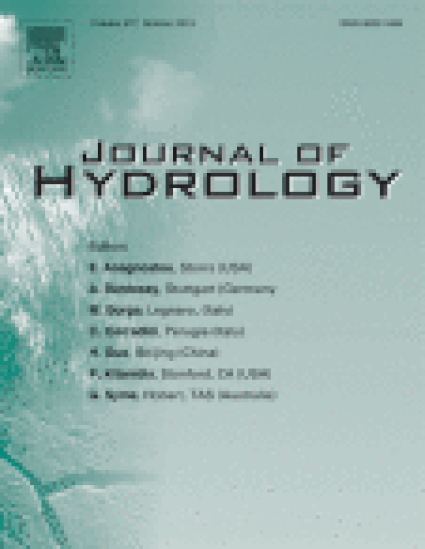
This study demonstrated the spatiotemporal variation in runoff generating areas in grassed and agro-forested hillslopes of Lesser Himalaya using soil moisture, soil hydraulic conductivity and rainfall datasets. Nine rainfall events of infiltration-excess dominated hillslopes were analysed and found that only high-intensity rainfall events were able to convert 1–5% of runoff at the outlet. The extremely low patch of soil hydraulic conductivity (/h) was located at the outlet in agro-forested hillslope whereas similar low soil hydraulic conductivity patch is located at the end portion in a grassed hillslope. Therefore, the grassed hillslope generated less runoff than the agro-forested hillslope due to its surface resistance and heterogeneity in soil hydraulic conductivity. The runoff generated from the upper part of hillslope re-infiltrated into the middle part due to higher soil hydraulic conductivity. During low and medium intensity rainfall conditions, major runoff contribution was observed from low conductivity zones of the hillslope. Moreover, we analysed the correlation of spatial variation in soil moisture with topographic wetness index (TWI) and soil hydraulic conductivity in two different landuse conditions to examine the predictive potential of these attributes during the wet and dry season. The optimal formulation of TWI was obtained from 72 different combinations using linear mixed effects modelling. The correlation between optimal TWI formulation and soil moisture was found to be negative as the main streamline is located near low conductivity zones. Furthermore, the correlation between TWI and soil moisture is stronger in the dry season than the wet season. In comparison to grass cover hillslope, agro-forested landuse system shows better negative correlation between soil moisture and TWI during the wet season as the agro-forested hillslope produced more runoff than the grassed hillslope. The correlation strength of soil hydraulic conductivity and soil moisture was strongest after mid of the wet season which is directly correlated to the moisture content of hillslopes.
Available at: http://works.bepress.com/james_mcnamara/88/
